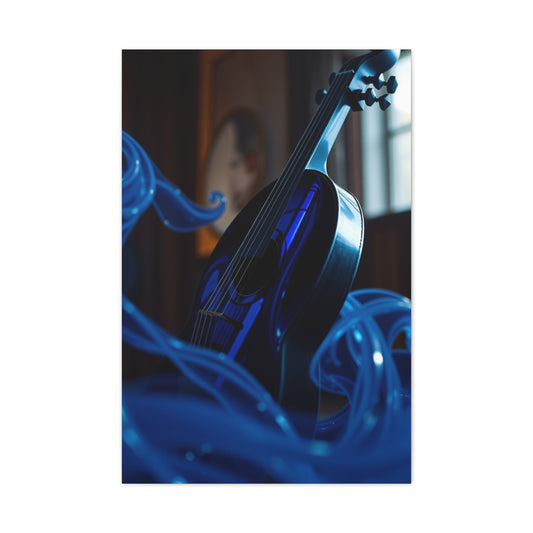The bedroom is one of the most intimate areas of a home, where tranquility, comfort, and style merge to create a sanctuary. Designing this space is not only about choosing a bed or curtains but also about harmonizing every detail so that it reflects both function and beauty. Among the prominent features that define a bedroom’s identity, the wardrobe plays a commanding role. It is not just a utility piece for storage but also an integral part of the room’s aesthetics. A thoughtfully designed wardrobe can influence the atmosphere of the entire space, transforming a simple room into an elegant and personalized retreat.
The importance of wardrobe decoration has grown over time, as modern lifestyles demand solutions that combine efficiency with artistry. With careful design, a wardrobe can become more than a fixture; it can evolve into the focal point of the bedroom, enhancing its charm while providing indispensable storage. Whether in a child’s room, a master bedroom, or a personal retreat, a creatively decorated wardrobe ensures that both practicality and sophistication coexist seamlessly.
Importance of a Well-Designed Bedroom
A bedroom that is designed with precision contributes to mental peace, relaxation, and a sense of order. When the environment is visually pleasing and organized, it positively affects mood and overall well-being. The wardrobe is central to this, as it is a static feature that remains longer than other furnishings. While chairs, lamps, or rugs can be replaced easily, the wardrobe generally stays in place for years, which makes its design choices more significant. Selecting a timeless design ensures that the wardrobe continues to blend well with evolving trends and changing tastes.
An elegant and functional wardrobe adds tremendous value to the home. It enhances convenience by accommodating clothing, accessories, and essentials in a systematic way, reducing clutter and creating visual harmony. Furthermore, from a property perspective, spacious and stylish wardrobes increase the resale value of a house. Potential buyers are often drawn to homes with ample storage that also carries an aesthetic appeal. For this reason, wardrobes must be designed with long-term utility and attractiveness in mind.
Another dimension of importance lies in personalization. Bedrooms are highly individual spaces, and a wardrobe designed with unique patterns, finishes, or trims can reflect the personality of the occupant. Whether someone prefers bold laminates, subtle pastel shades, or innovative sliding systems, the wardrobe becomes a canvas of expression. Its role is not confined to storing clothes; it represents lifestyle, taste, and creativity.
Bedroom Design Ideas for Small Spaces
Compact bedrooms require innovative approaches to ensure functionality without compromising style. In such spaces, wardrobes should be designed to optimize every inch of available room. Sliding wardrobes are among the most practical solutions, as they do not require extra clearance for doors. They provide smooth usability while maintaining a streamlined look, making them ideal for smaller layouts.
Another effective idea is the integration of mirrored wardrobes. Mirrors reflect light and create the illusion of openness, making confined rooms appear more spacious and inviting. In addition, mirrored panels double up as dressing aids, eliminating the need for separate furniture pieces. Etched or patterned mirror designs add artistic value, blending practicality with decorative appeal.
For compact interiors, lighter shades are highly recommended. Colors like ivory, soft grey, pastel blue, or muted beige enhance brightness and prevent the space from feeling congested. For individuals who prefer vibrant palettes, dual-tone laminates or subtle contrasts can be used to infuse energy without overwhelming the room. This balance ensures a lively environment without compromising the perception of openness.
Small bedrooms can also benefit from multipurpose wardrobes. Incorporating hidden drawers, foldable dressing tables, or side compartments for less frequently used items ensures that storage is maximized. Creative solutions such as secret sections or vertical shelves provide room for accessories and essentials, keeping the space free from clutter. The adaptability of such wardrobes makes them indispensable in homes where every square foot matters.
Another suggestion for limited spaces is the use of built-in wardrobes that seamlessly merge with walls. These units, designed to fit perfectly into alcoves or corners, eliminate dead space and maintain continuity in the room’s layout. Paired with minimalist handles or sliding glass doors, built-in wardrobes create a unified look that emphasizes both practicality and elegance.
Modern Bedroom Design Trends
Modern bedroom design emphasizes functionality, simplicity, and elegance, and wardrobes are at the heart of this approach. Today’s trends showcase a fusion of textures, finishes, and technologies that redefine how wardrobes contribute to interiors. Decorative laminates are a preferred choice for many homeowners. Unlike traditional wooden surfaces, laminates provide a wide array of options in patterns, colors, and finishes, enabling homeowners to select designs that resonate with their taste. For example, floral motifs lend sophistication, while bold checks or geometric patterns introduce a modern flair.
Another trend that continues to rise is the use of distinctive knobs and handles. Replacing standard hardware with unconventional designs—such as brightly colored handles, textured grips, or quirky shapes—can give a wardrobe an entirely new character. This subtle yet impactful change adds personality without the need for complete renovation.
Mirrors have become a defining element in modern wardrobes. Beyond their functional purpose, mirrored doors enhance brightness and bring depth to the room. From crystal-clear finishes that exude luxury to tinted or patterned variations that balance privacy and design, mirrored wardrobes cater to diverse preferences. In shared bedrooms, incorporating tinted glass or etched designs for his-and-her sections creates a balanced yet private arrangement.
Architectural trims and textured surfaces are also in vogue. Adding trims to plain doors introduces depth and dimension, elevating the visual appeal. A lavender wardrobe with textured frames, for instance, evokes elegance and grandeur while blending with modern interiors.
Technological innovations are reshaping wardrobes as well. Automated sliding systems provide effortless operation, while integrated LED lighting illuminates interiors for ease of use. Modular shelving systems allow flexibility, enabling customization according to lifestyle and storage requirements. These advancements transform wardrobes from simple furniture into sophisticated, multi-functional features of bedroom design.
The fusion of practicality and creativity defines modern wardrobes. They are no longer static structures but dynamic elements that enhance the bedroom’s aura while delivering unmatched functionality. Homeowners today prefer designs that echo individuality while ensuring that space is used wisely, ensuring that the wardrobe remains both an essential storage solution and a statement piece in contemporary bedroom design.
Luxury Bedroom Design Inspirations
Luxury in bedroom design is not limited to grandeur; it also represents refinement, exclusivity, and attention to detail. A luxurious bedroom should evoke a sense of indulgence while still maintaining comfort. The wardrobe, as one of the largest and most prominent features, often sets the tone for this environment. Incorporating premium materials such as polished veneers, textured laminates, or crystal-clear mirrored panels can instantly elevate the ambience. Sliding doors with metallic inlays or glass finishes are also popular in luxury interiors, as they combine functionality with aesthetic grace.
Lighting plays a vital role in luxury-inspired spaces. Integrated LED strips inside wardrobes not only make it easier to access belongings but also add a soft glow that complements the room’s overall lighting scheme. Accent lighting, such as spotlights above wardrobe panels, can further emphasize design details, enhancing the visual presence of the unit.
Another hallmark of luxury bedrooms is bespoke craftsmanship. Customized wardrobes tailored to fit the proportions of the room exude exclusivity. Features like etched glass doors, leather finishes, or modular shelving configurations provide personalization that reflects individuality. Luxury wardrobes often incorporate additional conveniences such as built-in drawers, pull-out racks for accessories, and dedicated compartments for shoes and handbags, ensuring that every item has a designated place.
Incorporating opulent color schemes further contributes to a luxurious aesthetic. Deep shades like emerald green, navy blue, or burgundy create richness, while metallic tones such as gold or bronze add sophistication. These hues can be balanced with lighter neutrals to maintain harmony in the space. Ultimately, luxury design is about achieving balance between extravagance and elegance, ensuring that the bedroom remains both lavish and serene.
Cozy and Minimalist Bedroom Design Tips
Minimalist design emphasizes simplicity, functionality, and clarity. A cozy minimalist bedroom focuses on creating a soothing environment where every piece serves a purpose. The wardrobe in such interiors should follow clean lines and a subdued aesthetic. Matte-finished laminates in soft hues like white, beige, or grey seamlessly blend with minimalist decor. Sliding wardrobes are particularly effective in such setups, as they maintain a sleek appearance without disrupting the flow of space.
Open shelving units incorporated within the wardrobe design can provide both utility and decorative value. By showcasing select items such as neatly folded linens or baskets, the wardrobe becomes a visual element that reflects the minimalist philosophy of “less is more.” To enhance coziness, wardrobes can be designed with warm-toned finishes like light oak or walnut. These tones add a natural feel, contributing to an atmosphere of relaxation.
Minimalism also relies heavily on clutter reduction. Wardrobe interiors should be structured for maximum efficiency, with dedicated sections for clothing, accessories, and essentials. Multipurpose compartments, hidden drawers, and organizers ensure that everything remains in place. Handles can be minimal or even replaced with handleless push-to-open mechanisms, which reinforce the clean aesthetic.
Soft furnishings in the room such as rugs, cushions, and curtains can be paired with the wardrobe’s style to maintain uniformity. Subtle lighting, including pendant lamps or integrated wardrobe LEDs, creates a warm and welcoming ambiance. The goal of minimalist bedroom design is not austerity but tranquility, where every detail contributes to harmony and comfort.
Color Schemes for Bedrooms
Color plays a fundamental role in shaping the mood of a bedroom. The wardrobe, as a large surface area, significantly influences the color scheme. When selecting colors for wardrobes and other bedroom elements, it is essential to consider both aesthetics and psychological effects.
Neutral tones like beige, cream, or ivory create a calm environment suitable for relaxation. They also pair well with most decor themes, allowing flexibility in choosing other accessories. Pastel shades such as mint green, lavender, or powder blue bring softness and are particularly suitable for compact bedrooms, as they visually enlarge the space.
For bolder statements, darker hues like charcoal, navy, or forest green can be used to create depth and richness. When paired with lighter walls and flooring, these colors prevent the room from feeling heavy. Accent colors, introduced through wardrobe handles, trims, or decorative panels, add character without overwhelming the space.
Monochromatic schemes are also popular in contemporary design. Using varying shades of the same color for walls, furniture, and wardrobes creates continuity and a cohesive aesthetic. For example, a bedroom with light grey walls, a medium grey wardrobe, and darker grey accents exudes balance and sophistication.
Ultimately, the chosen color scheme should resonate with the overall theme of the home and the personal preferences of the occupant. By aligning wardrobe finishes with wall colors, flooring, and fabrics, a harmonious and inviting bedroom environment can be achieved.
Choosing the Right Bedroom Furniture
Furniture selection is critical in defining the style and functionality of a bedroom. Alongside the wardrobe, the bed, side tables, and seating areas complete the ensemble. Harmony between these elements ensures that the bedroom feels cohesive and organized.
The bed, as the centerpiece, should complement the design of the wardrobe. For example, a wooden wardrobe pairs well with a wooden bed frame, while mirrored wardrobes suit contemporary upholstered beds. Side tables and dressers should follow the same material palette to maintain continuity.
Proportion is another key factor. In smaller bedrooms, bulky furniture can make the space feel congested. Opting for sleek designs with clean lines ensures that the room remains open and functional. Multipurpose furniture such as ottomans with storage or beds with built-in drawers can further enhance practicality.
Wardrobes should also be designed in relation to other furniture pieces. Placement is crucial to maintain easy movement around the room. Aligning wardrobes against a single wall prevents obstruction and maximizes floor space. Built-in wardrobes that extend from floor to ceiling can blend seamlessly with the rest of the furniture, creating a unified design.
The choice of materials should reflect durability and aesthetic goals. Wooden finishes add warmth and timelessness, while glass or laminate options contribute to modern appeal. Upholstered furniture pieces in fabrics that complement the wardrobe tones can tie the room together.
Ultimately, the right combination of furniture balances aesthetics, comfort, and utility. By carefully curating each piece, the bedroom transforms into a space that is not only visually captivating but also deeply functional.
Bedroom Layout and Space Planning
The foundation of a serene bedroom begins with a well-structured layout that balances form and purpose. Every corner of the room should contribute to both comfort and ease of movement, ensuring that furniture placement does not disrupt the flow of daily activities. The bed, as the centerpiece, requires positioning that maximizes natural light and maintains accessibility from either side. Placing it against a solid wall creates a sense of stability, while leaving adequate circulation space enhances freedom of movement. Wardrobes and storage pieces should be arranged thoughtfully, not only for functionality but also for visual balance, preventing the room from feeling congested.
An efficient layout relies heavily on spatial awareness. Larger bedrooms can accommodate seating corners or study nooks, while compact spaces demand multipurpose furniture that conserves square footage. Built-in wardrobes, sliding doors, and mirrored panels are particularly valuable in limited areas as they expand visual breadth without compromising storage. In contrast, expansive rooms can integrate open wardrobes or walk-in closets, offering an atmosphere of luxury while keeping the overall flow harmonious. The design should always prioritize proportion, ensuring no element overwhelms or diminishes another, fostering a sense of equilibrium.
Strategic placement of accessories and functional elements adds to spatial cohesion. For example, positioning nightstands near the bed ensures convenience, while aligning rugs and accent furniture with architectural lines maintains symmetry. Clever use of partitions or low shelving can also subtly divide zones within the same bedroom, creating distinct functional areas without walls. The overarching goal of space planning is to craft an arrangement that enhances relaxation, accessibility, and aesthetic charm simultaneously.
Lighting Ideas for Bedrooms
Lighting plays an indispensable role in shaping the atmosphere of a bedroom. It not only illuminates the space but also defines mood, character, and depth. Natural light is the most desirable, as it introduces warmth and vitality, making the room feel expansive and alive. Positioning the bed and wardrobe to take advantage of daylight ensures a cheerful environment during mornings and afternoons. However, the absence of sunlight in the evening requires a layered lighting scheme that accommodates diverse needs, from relaxation to reading or dressing.
Ambient lighting forms the backbone, often achieved through ceiling-mounted fixtures, recessed lighting, or chandeliers. Its purpose is to create even illumination, ensuring that the entire room feels welcoming. Task lighting, on the other hand, is crucial for specific activities, such as bedside lamps for reading, vanity lights for grooming, or directional spots for wardrobe interiors. Accent lighting enhances the décor by spotlighting artworks, textured walls, or decorative wardrobes, adding drama and sophistication to the space.
Dimmer switches offer adaptability, allowing inhabitants to shift from vibrant brightness to soft, romantic tones depending on mood. Incorporating LED strips along wardrobes, under beds, or behind headboards introduces a subtle yet modern glow that enriches the ambiance. Decorative lighting, such as pendant lamps or sculptural fixtures, acts as a statement piece, adding individuality while complementing the overall theme. The interplay of these different forms of illumination transforms a simple room into a versatile sanctuary that can effortlessly shift between functionality and repose.
Bedroom Storage Solutions
Storage is the silent architect of a clutter-free and harmonious bedroom. A room devoid of proper storage quickly becomes disorderly, diminishing both comfort and aesthetics. The wardrobe naturally dominates in this category, but thoughtful integration of multiple storage options ensures that every belonging has its place without overwhelming the visual appeal.
Built-in wardrobes remain a timeless solution, maximizing vertical space and offering customized compartments for clothing, accessories, and footwear. Sliding doors conserve space in compact bedrooms, while hinged designs suit larger layouts where swing clearance is not an issue. Modular wardrobes with adjustable shelving, hanging rods, and pull-out drawers grant flexibility to adapt storage according to changing needs. Incorporating mirrored panels doubles their function by creating the illusion of expansiveness and providing convenience for dressing.
Beyond wardrobes, under-bed storage compartments, ottomans with hidden sections, and headboards with integrated shelving enhance organization. Floating shelves contribute both storage and decoration, serving as platforms for books, art, or personal mementos. For smaller bedrooms, vertical units or corner wardrobes exploit underutilized niches, transforming them into efficient storage hubs.
Decluttering is an essential practice in maintaining storage harmony. Seasonal rotation of clothes, use of labeled boxes, and consistent organization prevent accumulation that disrupts tranquility. When storage is integrated seamlessly into the room’s architecture, it ceases to feel like a separate utility and becomes part of the design narrative, reinforcing the bedroom’s identity as a place of order and elegance.
Bedroom Decoration and Accessories
Decoration and accessories serve as the finishing brushstrokes that personalize a bedroom and make it feel alive. While the layout, lighting, and storage establish structure, accessories breathe character and intimacy into the environment. Their role extends beyond ornamentation; they embody the tastes, preferences, and lifestyle of the occupant.
Textiles are fundamental in setting mood and comfort. Bedspreads, cushions, curtains, and rugs introduce layers of color, texture, and softness that define the room’s personality. Neutral tones foster calmness, while vibrant hues create energy and expressiveness. Layering different fabrics adds tactile richness, offering both visual appeal and sensory delight. Artwork, photographs, or wall hangings further infuse individuality, narrating stories and evoking memories that enhance emotional connection.
Greenery in the form of indoor plants introduces freshness and a natural vibe, purifying air and softening hard lines of furniture. Mirrors extend light and dimension, strategically amplifying both natural and artificial brightness. Decorative objects like vases, sculptures, or artisanal pieces contribute character without overcrowding the room.
Consistency is key when selecting accessories. Each piece should resonate with the overall theme—be it minimalistic, bohemian, classic, or modern—so that the room feels cohesive rather than fragmented. At the same time, subtle contrasts create dynamism, preventing the space from appearing monotonous. Careful layering of accessories ensures that the bedroom remains not only visually pleasing but also deeply personal, providing comfort that goes beyond the functional.
Bedroom Flooring and Wall Design Ideas
The surfaces beneath your feet and surrounding your space form the canvas of bedroom design, dictating tone, comfort, and ambiance. Flooring sets the foundation, influencing the tactile feel and visual mood of the entire environment. Hardwood floors remain a timeless choice, known for their durability and warmth. Oak, walnut, and maple offer rich hues that blend seamlessly with both modern and traditional styles. For those desiring softness underfoot, carpets and rugs create cozy sanctuaries, reducing noise and infusing a sense of intimacy. In contrast, tiles and polished concrete appeal to minimalistic sensibilities, adding sleekness while being easy to maintain.
Beyond material, the finish and color palette of flooring impact perception of scale. Light-toned floors open up compact rooms, while darker shades ground expansive spaces, creating drama. Layering rugs with different textures or patterns adds another dimension, breaking monotony and defining functional zones such as reading corners or dressing areas. Underfloor heating systems also enhance comfort, ensuring luxury that remains invisible yet deeply felt.
Walls serve as both backdrop and focal point. Paint provides versatility, allowing homeowners to experiment with calming neutrals, bold jewel tones, or soft pastels depending on desired atmosphere. Wallpaper introduces depth through intricate motifs, whether floral, geometric, or abstract, adding a layer of artistry. Accent walls in wood, stone, or textured finishes create visual drama and highlight specific areas like the headboard zone. For an artistic twist, wall murals transform blank canvases into storytelling elements that reflect personality and creativity.
The harmony between floors and walls must be carefully curated. For example, dark wood flooring pairs elegantly with lighter walls, ensuring balance without overwhelming the eye. Conversely, patterned wallpaper finds stability when grounded by understated flooring. Consistency in undertones across both surfaces prevents discord, establishing a fluid visual narrative that enhances serenity and cohesion within the bedroom.
How to Mix Textures and Patterns in Bedroom Design
Layering textures and patterns brings vitality into bedroom design, offering a sensory experience that transcends flat surfaces. A successful combination begins with balance, where contrasts complement rather than clash. Textures create depth, while patterns introduce rhythm, both working together to elevate visual intrigue.
Natural textures like wood, linen, cotton, and wool establish grounding comfort, offering tactile richness. Pairing a wooden bedframe with a linen duvet and a woolen throw introduces varied tactile sensations that feel inviting yet harmonious. Smooth materials like glass, metal, and polished stone can then be interspersed to introduce sleekness, preventing the space from appearing rustic or overly casual. The dialogue between rough and smooth surfaces forms the cornerstone of balanced design.
Patterns should be introduced with intentionality. Stripes bring order and elongation, florals add softness, while geometrics instill modernity. The scale of patterns is critical: large motifs make bold statements and work best in expansive spaces, while smaller prints offer subtlety for intimate rooms. Combining multiple patterns requires a unifying element such as a shared color palette or recurring shape, ensuring that diversity feels cohesive rather than chaotic. For instance, striped curtains may pair well with a geometric rug if both share complementary tones.
Layering textures within accessories further enriches the space. Velvet cushions against crisp cotton sheets, or a rattan chair juxtaposed with a silk throw, create delightful sensory contrasts. The key lies in moderation—overloading textures and patterns dilutes their effect. Instead, prioritize focal points, allowing one or two bold elements to stand out while others provide supportive nuance. This approach preserves visual harmony and prevents overstimulation.
Mixing textures and patterns also allows personalization. A bohemian-inspired room may embrace vibrant, clashing prints layered freely, while a Scandinavian design relies on muted tones and subtle textures that create understated elegance. The method is not bound by rules but by sensitivity to proportion, balance, and atmosphere, ensuring that the bedroom remains an oasis rather than a visual battlefield.
Bedroom Design Mistakes to Avoid
Even the most thoughtfully planned bedroom can fall short if common mistakes disrupt functionality or comfort. Awareness of these pitfalls ensures that design choices remain practical while sustaining aesthetic beauty.
One frequent misstep lies in neglecting proportion. Oversized furniture in a small room overwhelms the layout, while undersized pieces in large spaces leave them feeling empty and disconnected. Careful measurement and scaling ensure that every element contributes harmoniously to the whole. Similarly, overcrowding the room with too many accessories, patterns, or textures creates visual chaos, diminishing the calming essence of a bedroom.
Poor lighting is another common oversight. Relying solely on a single overhead source often results in harsh shadows and inadequate illumination. Bedrooms thrive with layered lighting that combines ambient, task, and accent sources to serve multiple purposes. Skipping dimmer switches or neglecting bedside lamps compromises both comfort and practicality.
Storage mismanagement also undermines design. Ignoring built-in options or failing to plan adequate compartments leads to clutter, which diminishes tranquility. Wardrobes without thoughtful organization systems quickly become chaotic, spilling disorder into the entire space. Opting for style over function, such as choosing an ornate bed with no under-bed storage in a compact room, further exacerbates the issue.
Ignoring acoustics is another subtle yet impactful mistake. Hard flooring without rugs, bare walls without textiles, and sparse furniture amplify sound, creating echo rather than intimacy. Soft furnishings, layered textiles, and cushioned surfaces help absorb noise, reinforcing the bedroom as a peaceful retreat.
Color missteps also disrupt ambiance. While bold shades can energize, excessive use of intense tones generates restlessness, unsuitable for a place meant for rest. Conversely, an overly monochromatic palette risks sterility, robbing the space of warmth. Balanced use of color, grounded in a cohesive scheme, safeguards harmony.
Finally, disregarding personal comfort for the sake of trends leads to disconnection. A bedroom should reflect the occupant’s personality, offering solace and familiarity. Blindly following fashionable designs without considering lifestyle needs results in spaces that feel impersonal or impractical. The true essence of a bedroom lies not in adhering to fleeting styles but in curating a design that endures with meaning, function, and serenity.
Inspiring Bedroom Makeovers and Transformations
Reimagining a bedroom through thoughtful makeovers can completely redefine its essence, turning a mundane space into a rejuvenating sanctuary. Transformations do not always require elaborate renovations; even subtle changes in layout, color palette, and accessories can breathe new vitality into the atmosphere. The key lies in identifying what no longer serves the space and curating enhancements that resonate with comfort, elegance, and practicality.
One of the most profound transformations occurs through wall and surface modifications. A fresh coat of paint introduces immediate renewal, with lighter shades amplifying spaciousness and darker tones creating intimacy. Incorporating an accent wall through textured finishes, wooden cladding, or artistic murals elevates the aesthetic while adding depth. For those preferring less permanent changes, removable wallpaper provides versatility, allowing experimentation with patterns and colors without long-term commitment.
Furniture rearrangement is another powerful catalyst for transformation. Shifting the bed’s orientation to optimize natural light or repositioning wardrobes to maximize circulation can dramatically alter flow and usability. Adding multifunctional pieces, such as storage benches or modular shelving, not only enhances convenience but also modernizes the overall look. Repurposing older furniture through refinishing or reupholstering ensures sustainability while infusing character into the design.
Textiles hold transformative energy within bedroom makeovers. Replacing curtains with sheer drapes introduces softness and luminosity, while plush bedding layers infuse coziness. Statement rugs delineate zones, contributing both warmth and personality. The interplay of fabrics—velvet, linen, cotton, or silk—creates layered richness, making the environment visually appealing and tactilely inviting.
Lighting interventions further amplify transformations. Switching from a single overhead fixture to layered illumination reshapes mood and function. Ambient sources establish warmth, task lighting ensures utility, and accent features highlight decor details. Incorporating dimmers allows seamless shifts from bright productivity to subdued tranquility, accommodating varied needs throughout the day.
Decorative accents tie transformations together. Artwork above the headboard, clusters of indoor plants, or mirrors positioned to reflect natural light invigorate the space while reinforcing personal expression. Even small details, such as distinctive handles on wardrobes or a curated gallery wall, leave significant impact. The transformation process thrives when functionality merges seamlessly with individuality, crafting a bedroom that mirrors both style and soul.
Smart Bedroom Design with Technology
Integrating technology into bedroom design fosters convenience, efficiency, and modernity while preserving tranquility. Smart innovations, when thoughtfully incorporated, enhance comfort without overwhelming the serene purpose of the space. The essence of smart design lies in discreet functionality that supports daily life seamlessly.
Lighting technology forms a cornerstone of smart bedrooms. Automated systems allow users to adjust intensity and color temperature through voice commands or smartphone applications. Warm-toned light during evenings encourages relaxation, while cooler tones in the morning promote alertness. Motion-activated night lights ensure safe movement without disrupting rest, exemplifying how subtle automation augments practicality.
Climate control further enriches smart bedroom design. Programmable thermostats and intelligent ceiling fans respond to user preferences, maintaining ideal sleeping conditions. Integration with sensors allows automatic adjustment based on occupancy, ensuring energy efficiency while preserving comfort. In warmer climates, remote-controlled blackout shades keep interiors cool, while in colder regions, smart heating blankets deliver tailored warmth.
Furniture and fixtures also embrace technological refinement. Adjustable smart beds with customizable positions enhance posture and improve sleep quality. Some even integrate biometric sensors that monitor rest patterns, providing insights to refine sleeping habits. Wireless charging stations embedded within nightstands eliminate clutter, merging practicality with modern aesthetics.
Entertainment integration has evolved beyond bulky systems. Compact smart speakers offer immersive soundscapes, ranging from calming sleep playlists to morning news updates. Voice assistants connect seamlessly with other devices, enabling effortless control of lighting, climate, or even curtains. Discreetly placed projectors or wall-mounted smart screens provide cinematic experiences without encroaching on bedroom serenity.
Security and wellness features further solidify the role of technology in design. Smart locks and discreet surveillance ensure safety without intruding on aesthetics. Air purifiers equipped with sensors monitor air quality, automatically filtering pollutants to foster healthier environments. Aromatherapy diffusers with programmable schedules enrich ambience, blending wellness with sensory delight.
The integration of technology in bedrooms extends to personalization. Scenes or presets allow environments to adapt to moods—whether creating a tranquil retreat for relaxation, a focused atmosphere for reading, or a revitalizing setting for morning routines. These automated experiences tailor the bedroom to evolving needs, ensuring each moment feels deliberate and well-curated.
The key to successful technological integration is subtlety. Devices should blend harmoniously with decor, avoiding a sterile or overly mechanical ambiance. Hidden wiring, minimalist interfaces, and seamless device synchronization maintain the room’s aesthetic integrity. By combining innovation with design sensitivity, bedrooms evolve into spaces that embrace modernity while safeguarding their timeless role as sanctuaries of rest and renewal.
Luxury Bedroom Innovations
Luxury in bedroom design is not merely about opulence but about creating an immersive experience that balances refinement with ease. The essence of a luxurious bedroom lies in the harmony between thoughtful aesthetics, high-quality materials, and intelligent planning. From bespoke wardrobes to indulgent textures and advanced functionalities, luxury innovations elevate personal spaces into timeless sanctuaries of repose.
One hallmark of luxury is material choice. Natural stones such as marble or onyx lend sophistication to flooring and accent walls, while exotic woods like teak or walnut add warmth to furniture and cabinetry. Layering these with plush textiles such as Egyptian cotton, cashmere, or velvet creates a tactile richness that exudes comfort. Incorporating handcrafted finishes and artisanal details further enhances exclusivity, ensuring the room feels curated rather than generic.
Spatial planning also contributes to luxury. Bedrooms that integrate walk-in wardrobes or dressing alcoves provide both grandeur and functionality. Expansive windows that embrace natural light paired with sheer drapery establish an airy atmosphere, while blackout options ensure restful nights. Expansive headboards upholstered in rich fabrics, ceiling designs with recessed lighting, and statement chandeliers exemplify how structural choices anchor the luxurious character of the room.
Technology discreetly woven into the bedroom elevates its indulgence without compromising serenity. Automated climate control, personalized lighting systems, and hidden audio solutions integrate seamlessly into modern luxury. Touchless controls for curtains, soundproof glazing, and concealed storage panels further enhance both convenience and aesthetic purity. Luxury is expressed not only through grandeur but through the seamless fusion of design and ease.
Artwork, sculpture, and curated accessories lend individuality to luxury bedrooms. Sculptural bedside lamps, bespoke mirrors, and heritage-inspired rugs transform the environment into a gallery-like space that speaks of culture and refinement. The idea is to create a room that feels personal yet transcends trends, embodying both modern innovation and timeless artistry.
Sustainability is becoming a part of luxury as well. Eco-friendly paints, responsibly sourced woods, and energy-efficient fixtures demonstrate that opulence can coexist with environmental mindfulness. The refinement lies not only in appearance but in the ethical choices behind each design element. Luxury bedrooms now tell stories not just of wealth but of responsibility and taste.
Timeless Principles of Bedroom Design
Creating a bedroom that endures across seasons and shifting design movements requires attention to timeless principles. These principles do not bind creativity but rather offer a foundation upon which lasting beauty and functionality can thrive. A bedroom crafted with enduring values becomes a haven of continuity, resisting fleeting trends while adapting gracefully to evolving lifestyles.
The first principle is balance, achieved when each element in the bedroom works in harmony with the others. Balance may be symmetrical, where furniture and decor mirror each other for a sense of order, or asymmetrical, where different forms complement one another to create a dynamic yet stable aesthetic. Without balance, the bedroom risks becoming visually chaotic or emotionally unsettling.
Proportion and scale follow naturally as guiding forces. Furniture should be in proportion not only to the room’s dimensions but also to one another. Oversized wardrobes may overwhelm compact rooms, while tiny bedside tables can appear lost in expansive master suites. Correct proportion ensures that every element has presence without overshadowing the rest. This sense of appropriateness creates ease and cohesion in the space.
Rhythm in design is another key, achieved through repetition, progression, and contrast. Repeated motifs, such as patterns in textiles or recurring accent colors, provide continuity. Progression, such as gradually varying the size of lighting fixtures or layering tones from light to dark, adds movement and interest. Contrast, when used thoughtfully, injects vitality—think of pairing sleek metal lamps with rustic wooden flooring to energize the aesthetic.
A timeless bedroom also emphasizes unity. All choices—furniture, finishes, textiles, and accessories—should relate to one another. Unity is not about uniformity but about creating a visual conversation where elements support the same narrative. A coherent theme, whether minimalist, classical, or transitional, ensures that the room feels complete and intentional rather than pieced together.
Materiality has an outsized role in enduring design. Natural materials like stone, wood, and wool possess inherent longevity in both durability and appeal. They age gracefully, developing patinas that add character rather than detracting from beauty. Synthetic or trendy finishes may provide novelty but often lack permanence. Investing in authentic materials ensures that the bedroom matures elegantly over time.
Color is equally integral to timelessness. Neutral bases, such as shades of beige, grey, or ivory, offer flexibility, serving as a canvas for accent tones that can be easily refreshed. Classic palettes rooted in nature, like earthy browns, soft greens, or oceanic blues, resonate with a sense of permanence. While bold shades can invigorate, anchoring them with timeless neutrals ensures longevity.
Lighting remains a defining principle. Layered illumination—ambient, task, and accent—ensures functionality while sculpting mood. A timeless bedroom avoids overreliance on a single fixture. Instead, a balance of chandeliers, wall sconces, floor lamps, and concealed lighting creates dimension. Natural light, too, plays a pivotal role. Maximizing daylight with thoughtfully placed windows or reflective surfaces imbues the bedroom with an ever-changing vitality aligned with circadian rhythms.
Storage solutions embody timeless practicality. Built-in wardrobes, hidden compartments, and modular shelving systems are not merely conveniences but long-term investments in order and clarity. Clutter disrupts the serenity of a bedroom, making intelligent storage a non-negotiable element of enduring design.
Texture offers another path to longevity. A carefully chosen mix of soft and firm, rough and smooth, warm and cool, brings depth and engagement. Linen bedding, wool rugs, leather headboards, and ceramic lamps all contribute tactile variety, creating richness that transcends fleeting fashions. When textures are curated with thought, the bedroom retains its relevance through changing eras.
Cultural resonance is also a dimension of timelessness. Incorporating heritage-inspired designs, artisanal crafts, or regional motifs roots the bedroom in identity. Such elements withstand trends because they reflect history and meaning. They carry emotional weight that cannot be easily displaced, ensuring the bedroom remains deeply personal while retaining universal appeal.
Sustainability intersects naturally with timeless design. Choosing eco-conscious materials, durable furnishings, and energy-efficient systems extends both the life of the bedroom and its relevance in a world increasingly concerned with environmental impact. Sustainability ensures that the bedroom remains aligned not only with individual comfort but also with collective responsibility.
The final principle lies in adaptability. A timeless bedroom is not static; it evolves with its inhabitants. Modular furniture, neutral palettes, and flexible layouts allow the room to shift as lifestyles change—be it accommodating children, working from home, or aging in place. By prioritizing adaptability, the bedroom remains functional and appealing for decades.
Timeless design does not reject modernity; instead, it absorbs innovations selectively, weaving them into an enduring fabric. A bedroom infused with these principles becomes more than a shelter for rest—it transforms into a sanctuary of permanence and calm, capable of weathering design cycles while holding steadfast to its essence.
This approach reminds us that a truly enduring bedroom is not created by chance but through intention. By prioritizing balance, proportion, rhythm, unity, authentic materials, enduring palettes, layered lighting, intelligent storage, textural richness, cultural resonance, sustainability, and adaptability, one ensures a sanctuary that reflects both past and future. Such a bedroom is not bound by time but elevated by it, offering serenity and resonance for years to come.
Final Insights on Bedroom Design
A well-conceived bedroom is more than a physical space; it is an intimate retreat that reflects lifestyle, nurtures wellbeing, and adapts to evolving needs. The transformation of bedrooms into thoughtfully designed havens requires a balance of creativity, practicality, and personal resonance. Whether inspired by modern minimalism, cozy retreats, or opulent innovations, the core remains the same: to shape an environment that encourages rest and rejuvenation.
Wardrobes, lighting, flooring, furniture, and color all serve as pivotal elements in curating this sanctuary. Their interplay determines the character of the room, while their adaptability ensures longevity. Bedrooms that embody functionality while embracing beauty remain timeless, transcending fleeting trends and cultivating comfort across generations.
Design mistakes, such as overcrowding the space, neglecting lighting layers, or mismatching furniture, can easily disrupt harmony. However, careful planning, an eye for detail, and a clear vision safeguard the equilibrium. By weaving textures, patterns, and innovative materials together, even modest bedrooms can evolve into spaces that evoke serenity and personal pride.
Technology, though modern, has found its rightful place in bedrooms as an enabler of ease rather than an intruder. When integrated subtly, it enriches the experience of living, offering tailored comfort, security, and ambience. In parallel, sustainable practices ensure that design is not only forward-looking but also responsible, aligning personal sanctuaries with global consciousness.
Ultimately, bedroom design is a dialogue between personality and space. It embodies choices that resonate with one’s rhythm, whether through vibrant palettes, minimalist layouts, or indulgent luxuries. The bedroom becomes more than a place to sleep—it evolves into a reflection of identity, a cornerstone of wellness, and a canvas for personal expression. The art of bedroom design lies in merging imagination with intention, yielding spaces that are not just visually appealing but profoundly meaningful.
Conclusion
Bedroom design is an evolving journey that combines creativity, comfort, and functionality into a singular expression of personal style. From the initial steps of planning space and selecting furniture to the advanced integration of technology and luxurious elements, every decision contributes to shaping a sanctuary that feels both intimate and timeless. A well-thought-out bedroom nurtures rest, reflects individuality, and adapts gracefully to changing needs.
Throughout the process, attention to details such as lighting, textures, patterns, and storage ensures that the room remains balanced and cohesive. Small adjustments like introducing mirrors, experimenting with color palettes, or rearranging layouts can be just as impactful as large-scale transformations. Incorporating sustainability into these choices further elevates the space, proving that mindful living and elegance can coexist harmoniously.
Ultimately, the bedroom should be more than just a place of slumber; it should embody renewal, tranquility, and self-expression. Whether minimalist, luxurious, or eclectic, a bedroom that mirrors its inhabitant’s rhythm and values becomes a true reflection of lifestyle. By blending functionality with artistry, the bedroom transforms into not only a personal refuge but also a lasting statement of design excellence.
























